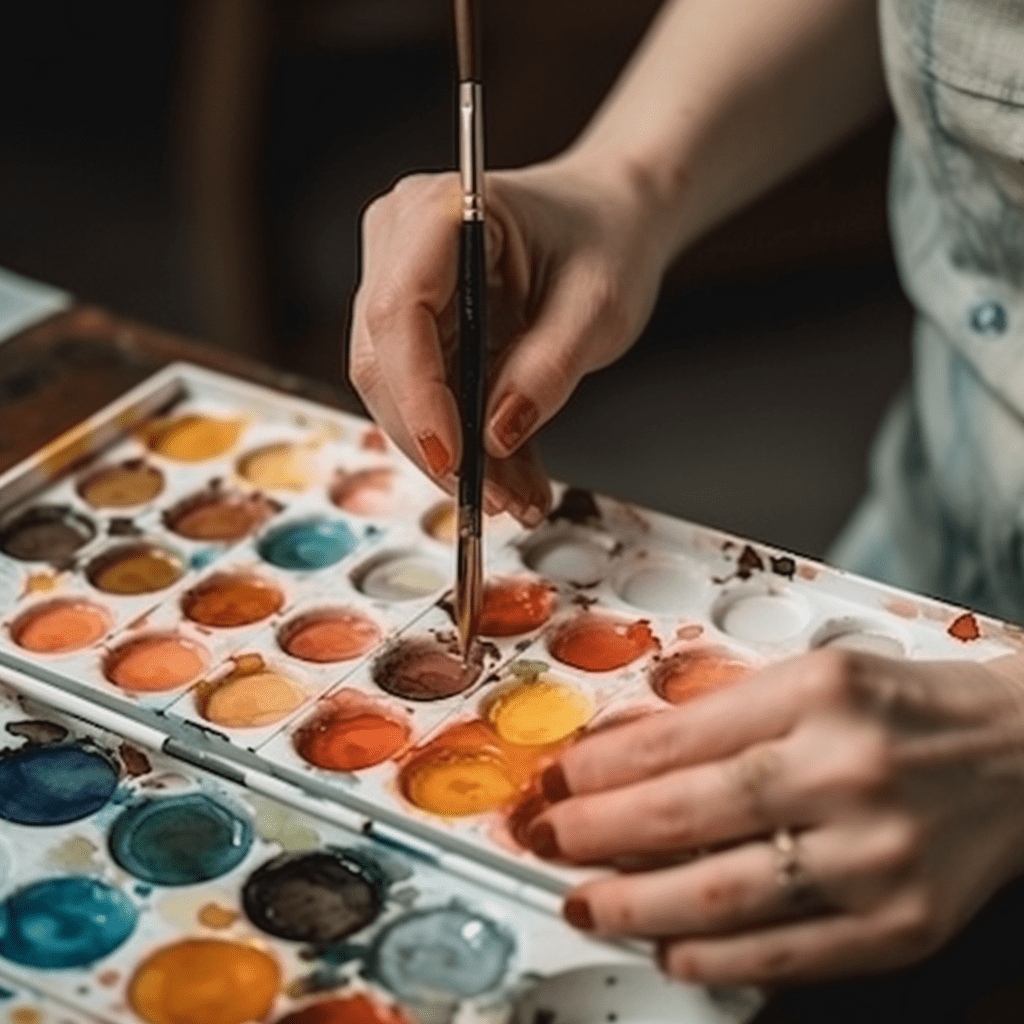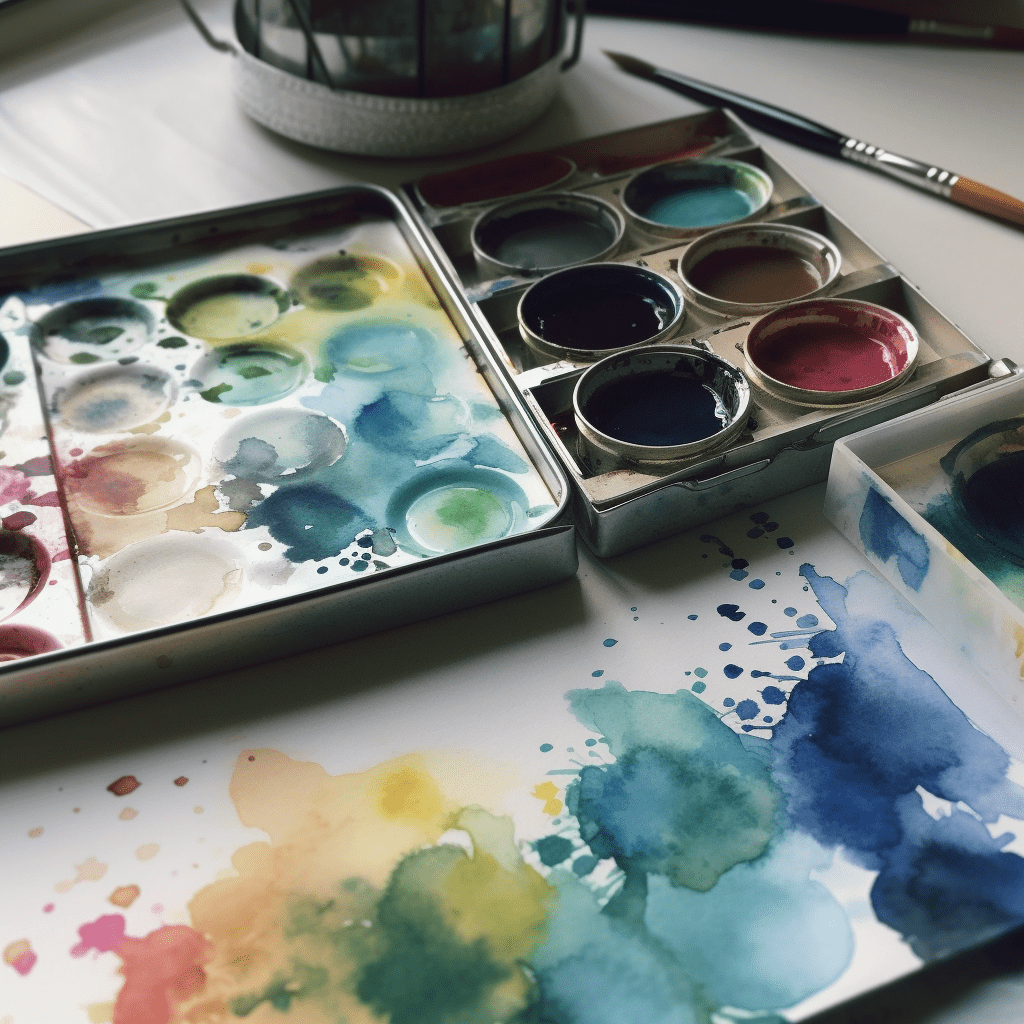Creating Your Palette: Tips and Tricks for Mixing Watercolor Paints
Welcome to my class on how to mix watercolor paint! If you’ve ever wanted to learn the basics of working with watercolors, then this is the perfect place for you. In this course, I’ll teach you all about color theory and how to mix paints like a pro. You don't need any prior experience or knowledge - just an open mind and willingness to learn! Together, we'll explore different techniques that will help you create beautiful works of art in no time. So let's get started - by mastering the fundamentals of mixing watercolor paints.
Supplies Needed

When it comes to watercolor painting, the supplies you need can make all the difference in your final product. In this section, I'll lay out what you need so that you can get started on creating beautiful works of art. To get started with mixing watercolors, you'll need some basic supplies. You should have a good-quality sheet of watercolor paper, several sizes of watercolor brushes, and a paint palette for mixing colors. Having separate cups for clean water will also help keep your colors from becoming muddied. Art sponges are great for blending colors too. Now that we've gathered our supplies, let's move on to preparing the paints!
Preparing The Watercolor Paints
Preparing your watercolor paints is essential to successful color mixing. To get started, you'll need a basic set of colors for your palette and some clean water in containers. Begin by loading your brush with the paint from the tube or pan. Then add a few drops of water to create a paste-like consistency on the tip of your brush. This will help you build up layers of pigment as you work. With practice, you can learn how much water to use when preparing paints for various techniques such as wet-on-wet and drybrush painting.

Next, it's time to start experimenting with color combinations! You can explore different hues and shades through traditional color theory basics like complementary colors or analogous colors, or try something fresh and unexpected. You might find that combining two primary colors creates an entirely new hue - which could be used to create amazing effects in your paintings! Regardless of what technique you choose, remember that practice makes perfect when it comes to mastering watercolor mixes.
Color Theory Basics

Now that you have your watercolor paints all ready to go, let’s dive into the basics of color theory. We'll start by taking a look at the color wheel – which is like a visual map for understanding hues and their relationships with each other. Using this tool helps us create beautiful color combinations and understand how colors can affect one another when they mix on the palette or paper.
When working with colors, it's also important to think about their temperature - whether they are warm (red, yellow) or cool (blue, green). Color harmony is achieved when both warm and cool hues are blended in a balanced way. This creates depth and richness in your painting that will make it stand out from the crowd!
Another key element of color theory is finding complementary colors that bring vibrancy to any artwork. Complementary pairs are two colors located directly opposite each other on the color wheel – such as red and green, blue and orange, and purple & yellow. When placed next to each other these pairings seem brighter than if used alone; making them great options for creating contrast in your paintings.
Let’s now move on to mixing the colors on the palette…
Mixing Colors On The Palette
Mixing colors on the palette is a fundamental skill for any watercolor painter. To get started, select two or more paint colors and place them onto your palette. A wet brush will help you to mix these colors smoothly. You'll need to experiment with how much of each color you should use; it's best to start small when mixing colors! As you mix the colors, be sure to keep an eye out for any impurities that may come up from the paper towel used as a surface for your palette.
When blending colors, it's important to note that many techniques can be utilized. For example, dry brushing allows you to create soft transitions between tones by lightly applying pressure with a dampened brush in short strokes. Additionally, you can also utilize other tools such as sponges or pads of tissue paper if desired.
Remember: practice makes perfect! With enough practice, you'll hone your skills in no time and become comfortable using various methods of color-mixing on the palette.
The possibilities are truly endless when it comes to utilizing paints on your palette – let yourself explore different combinations and discover new results! From here we move into discussing techniques for blending colors...
Techniques For Blending Colors

The beauty of watercolor painting is that it allows you to create an endless array of blended colors, from delicate pastels to bright and vibrant jewel tones. But how do you get there? Let's explore some useful techniques for blending watercolors!
First up, let’s talk about wet-on-wet blending. This technique involves applying a wash of one color onto a dampened surface and then adding another layer of paint over it while still wet – this helps both colors blend into each other seamlessly. You can also use dry-on-dry blending, which requires brushing two different colored paints side by side without any overlapping or mixing. Another great option is wet-on-dry blending – here you apply a wet layer on top of a dry layer, allowing them to mix as they come in contact with each other. And lastly, don't forget about color lifting techniques - these involve using a brush or paper towel to lift off excess pigment after layering multiple washes.
By mastering these four key techniques for blending watercolors, you can achieve almost any desired hue! Now let’s move on to creating interesting effects when painting with a mixed color palette...
Painting With A Mixed Color Palette
Now that you've mastered the techniques for blending colors, it's time to explore painting with a mixed color palette. Working with multiple paint colors can be daunting at first, but by following some simple steps you'll soon find yourself creating stunning watercolor pieces. Here's what to keep in mind when mixing your unique watercolor palette:
- Start with the basics: familiarize yourself with the primary hues - red, yellow, and blue- as well as black and white. These will serve as your foundation for any painting project.
- Experiment! Don't be afraid to combine different colors or try out unconventional paint mixing methods such as using wax crayons or bleach. You may discover an unexpected color combination that works perfectly in your piece.
- Consider how the light affects each hue of your color palette; pay attention to how shadows interact with different tones and shades of paint on paper. This will help you create a harmonious composition where all elements work together seamlessly.
With these tips in hand, you're ready to start experimenting and creating beautiful artwork with a mix of vibrant colors! As you embark on this journey of exploration, don't forget that troubleshooting is part of the process – so if something doesn’t turn out quite right just take some notes and move on to your next masterpiece!
Troubleshooting Tips
Mixing watercolor paint is like conducting a symphony - it takes patience, skill, and practice.
Issue | Explanation | Example |
|---|---|---|
Color Is Too Dark | Use more of the color's complement or lighter tone to lighten the shade. | Adding white to dark blue will create a lighter version of that same blue. |
Color Is Too Light | Add a little bit of its complement or darker tone to deepen the hue. | Mixing black into yellow can give you an olive green. |
Colors Are Not Blending Well | Start with transparent pigments before using opaque ones; try adding some medium in between layers too! | Transparent Red Oxide + Medium = Smooth Transition from red to orange when applied on paper. |
The key to successful watercolor painting is knowing how to mix different paints together to achieve desired effects and shades. Understanding which ones work best paired with each other is essential for any artist, so be sure to experiment with various combinations until you find what works for you! Practice makes perfect - if at first something doesn't look quite right, don't worry, just keep trying different methods until you get the desired result. With enough practice and experimentation, you'll become an expert in no time!
Conclusion
As a watercolor painting instructor, I am always thrilled to share my knowledge and enthusiasm for the craft of mixing colors. With just a few supplies and some practice, you can learn how to mix vibrant hues that will bring your artwork to life. Don't be afraid to experiment with different color combinations or try new techniques like blending together two complementary shades. You may even find yourself creating unexpected results—beautiful surprises that will make your paintings unique!
When it comes to mastering the art of watercolor paint mixing, remember: practice makes perfect! The more you work at combining colors on the palette, the better you'll get at predicting which tonal variations they'll produce when applied to paper. As long as you keep experimenting and exploring what works best for you, eventually, your own personal style will emerge through your masterful creations.
So go ahead and give watercolor paint mixing a shot—you've got nothing to lose but lots of fun and beauty waiting to be discovered!






